The Hero Read online
Page 2
It turned out she was only about halfway back. The forty-plus years since we graduated have seen an ongoing tsunami of discovery and analysis. I remain fascinated, and I keep up with the news as well as I can. The last common ancestor we had with anything else was about seven million years ago. Since then we have been evolving on our own, one hard-won generation after another. The length of a generation was at first short and animal-like, but they grew slowly to the present-day when a generation is taken to last twenty-five years or so. The arithmetic is therefore a moving target and hard to pin down, but a fair guess might be that we have been evolving on our own for perhaps 400,000 generations so far. I could picture my mother, with my grandmother standing behind her, not very different, and her mother behind her, again not very different, and behind her an endless line of 399,997 other women, each very similar to the one in front and the one behind, but cumulatively receding toward a small, apelike appearance. Lucy would be about number 200,000 down the line (if she’s in our ancestral lineage; some think she isn’t). Collectively and personally that line represents unlikely and astonishing reproductive success – every one of those 400,000 women survived long enough to have a female child, who survived long enough to have a female child of her own, and so on, through Ice Ages and million-year heatwaves and famines and epidemics, until it got to my mother. At that point the unbroken seven-million-year matriarchal line came to an abrupt end, because although my mother survived long enough to have four children, they were all boys. No big deal. Happens all the time. But nevertheless a sad end. After 400,000 successful passes of the baton, there is no new woman to stand in front of my mother.
Those seven million years were mostly hard going. There was no triumphant and irresistible march toward where we are today. Most of the time we were close to the bottom of the pile. The best place to find early bones is a hyena’s den. We got dragged there, after the alpha predators were done with us. We were weak, slow, often wounded, often hungry. Going nowhere, basically. Then something happened.
The whole basis of evolution is random mutation. Each one of those 400,000 women was similar to the woman in front and the woman behind, but they weren’t identical. Most mutations are small, so-what, no-real-difference things. They come and go. Some mutations are debilitating. They die out fast. Some are beneficial, and go on to spread widely, because of enhanced genetic success over possibly hundreds of generations. Some are super-beneficial, and therefore spread even faster. Which is what seems to have happened with our brains. Suddenly they got bigger. I would love to have been a fly on the wall during the early stages of this development. Some folks must have been making out like bandits. Their genetic success was so overwhelming that in what looks from a distance like a mere blip of time, the fossil record shows our brains became suddenly and impressively huge.
There’s a chicken-and-egg argument about whether our new brain capacity then allowed for expanded cerebral activities, or whether expanding cerebral activities themselves drove the increase in our brain capacity. Or both. Either way, one of the new cerebral activities was crucial. It turned us from weak, middle-of-the-pack prey into the most powerful animal on earth. That activity was language.
Not simple language. We almost certainly already had that. Many animals do. Prairie dogs have different sounds for airborne predators and ground-based predators. What we got was syntactical language. The huge increase in bandwidth gave us the ability to speculate, strategize, coordinate, discuss, predict and develop a plan B ahead of time. Whereas eleven humans had previously been a mid-table team, now suddenly they were one giant animal, lethal and effective. Suddenly in a manner of speaking, of course. Even rapid evolutionary change must feel slow at the time.
This all happened about 10,000 women ago. The previous 390,000 had not been able to speculate, strategize, coordinate, discuss, predict, or develop a plan B ahead of time. Now things were different. The advantages were obvious. One of the books kicking around our undergraduate bedroom was Stone Age Economics by Marshall Sahlins. In it he made the startling argument that no one will ever again be as affluent as Stone Age humans during the best of Stone Age times. For millennia they had everything they needed all around them, in great abundance, and they became very good at getting it. Sophisticated language was their secret weapon.
Now, quite rightly, scientists stick to just the facts, ma’am, and what they can prove, and so on. Some argue about hyoid bones, and how upright bipedal posture displaced our larynxes and certain other tissues, all in a downward direction, which came in useful later, because they were found to be newly capable of the variety and subtlety of sounds required by a complex spoken language. That is what a scientist reports. A novelist wants to imagine what those people were saying. Is such speculation legitimate? I don’t really care. Such musings are merely a personal enthusiasm. I’m not trying to convince anyone of anything. I’m not entering evidence into the academic record.
And anyway, sometimes such speculation works really well. Another of the books kicking around our undergraduate bedroom was The Descent of Woman by Elaine Morgan. Morgan was a Welsh screenwriter. Among much else she wrote episodes for Doctor Finlay’s Casebook. She won two BAFTAs, two Writers’ Guild awards, a Prix Italia, and the Royal Television Society’s Writer of the Year award for her serialization of Vera Brittain’s Testament of Youth. She also had a keen amateur interest in evolutionary anthropology and human origins. She was irritated by the contemporary male-centred pop science approach taken by Desmond Morris, among others. She saw it as a classic example of history as ‘his story’. For example, Morris theorized that male humans lost their body hair so that they could sweat better, as they charged around the savannah like the mighty hunters they were. OK, Morgan thought, but why did women lose even more of their body hair, while doing nothing but sitting around at home, on bottoms Morris claimed were made ample for that very purpose?
Morgan took what we knew, and applied a writer’s focused imagination to figure out how we got from there to here. Why are humans the only mammals with vestigially webbed fingers? Why are humans the only mammals who cry salt tears? Why does what remains of our body hair flow with water? And so on. Morgan’s conclusion was that a significant number of our ancestors had spent a long period – certainly hundreds of thousands of years – living on the seashore, half in and half out of the water, either driven out of the forests and away from the savannahs by competition for resources, or forced to seek refuge from rising temperatures. Hers was a major contribution to what is known as the aquatic ape hypothesis. Naturally she was derided for being an amateur, and worse, a woman. But now nearly fifty years later there is some acceptance of the theory. The kind of nutrients in shellfish and seafood are excellent for brain development. Body language and gesture were useless while bobbing around in the shallows, which might have spurred vocal communication. Some ancient hominid fossils show growths in and deformities of the ear, identical to those found in present-day divers and surfers. Human babies are born coated in vernix caseosa, a waxy, waterproof short-term protectant for their newborn skin, as are harbour seals and some sea lions. And so on. Like I said, sometimes speculation works really well.
So what were they saying, ten thousand generations ago? Remember, these people were not yet modern. Paleoanthropologists guess that humans were cognitively, behaviourally and physically modern only about 1,750 women ago. In other words, if you had a time machine and could go get an orphan baby from that period and bring her home, she would grow up exactly like every other modern kid, with an iPad and an iPhone and texting and petty high school dramas. Before that period, it wouldn’t work. The kid would seem odd. Ten thousand generations was a very long way before that period. Humans were still very primitive, albeit using language. But using it, I imagine, in a strictly functional and transactional manner. Stone Age affluence was about a technical balance between supply and demand, during the best of times. It didn’t imply a permanent cushy lifestyle with plenty o
f leisure. For most of the Stone Age, every day was filled with work and danger and difficulty. Hunting big game was exhausting and perilous. Foraging required extensive coordination to be efficient. Meanwhile other predators were enjoying their own take on supply and demand. An unsettling percentage of human remains from the Old Stone Age have bite marks on them. Perhaps night-time fires had to be kept burning, and a guard organized.
In other words, I imagine they were talking non-fiction. I think at first it was inevitable. The entire species-saving power of complex communication was predicated upon everyone telling the truth. Or, more technically, upon people not yet realizing language could be used any other way. If someone said the woolly mammoths were in the next valley over, but knew they weren’t really, then although the statement itself might have been dazzling in its fluency and its variety and its subtlety, it would have caused the whole evolutionary value of language to be immediately and fatally short-circuited, because then language would have been of absolutely no practical help to the situation, and therefore it would very quickly have become just another small, so-what, no-real-difference curiosity. But it didn’t, because my 9,998-times great grandmother took it seriously.
At this point, because I’m an amateur and a man, someone will point out that my belief in early truthful non-fiction is naive. Even chimpanzees tell lies, they will say. Which is true. Bad chimps have been observed chattering the phrase for Get out! Get out! There’s a predator coming! when really there wasn’t, so that the good chimp would drop his banana in a panic, so that the bad chimp could grab it up and eat it. To which I say yes, I’m sure we did that too, way, way, way back, as some kind of ancient animal reflex, someplace very early among the first 390,000 women, when we were still on a par with chimpanzees, cognitively. But not 10,000 women ago. They were too smart. What other definitive evolutionary gain has ever been given away by internal sabotage?
The Old Stone Age was very long. As its name suggests, it started with the first use of stone tools, which was about 200,000 women ago, around the time Lucy was falling out of a tree. As can be imagined, with evolving and developing participants, progress started slow, stayed slow for a long time, and then got exponentially faster and faster, with a marked and sophisticated acceleration about 10,000 women ago (when language started, unsurprisingly). A new toolmaking method was developed – the prepared-core technique, which had faint pre-echoes of modern mass production. Previously flint knappers had made, say, a hand axe out of whatever lump of stone lay closest by. Now the lumps of stone were carefully pre-sorted, by shape, size and grain, so that finishing an article might require perhaps only minimal further work. Productivity exploded. Tiny stone tools called microliths were invented, and used to make the first composite weapons, as arrowheads or spear tips.
Probably very little of this progression was learned from contact with other bands or tribes. At that time the human population was still tiny, and it was under constant intense pressure from the climate. A period of extremely harsh cold began about 2,000 women ago (perhaps my 1,998-times great grandmother is wearing a heavy animal fur, as she waits patiently in line) and about eight hundred women later, the individual standing 1,198 places behind my grandma was one of perhaps only two thousand living women in the whole of what we now call Europe. Only the very strongest survived that vicious population bottleneck, and the very best at speculating, strategizing, coordinating, discussing, predicting and developing a plan B ahead of time. Probably a plan C and a plan D too, under the circumstances. Truthful non-fiction carried the day.
But it was increasingly mixed in with something new and strange. At some point those women started talking about things that hadn’t happened to people who didn’t exist. This was not lying, in a sense that threatened the evolutionary value of language. This was a radical mental jump in a completely different direction, never before attempted. This was imagining a parallel or theoretical universe, where things could happen, based on experience, but not constrained by fact. In other words, they invented fiction. We don’t know when exactly. A spoken word is not a discoverable artefact. It is gone forever, as soon as the last echo dies away to silence. But perhaps we can calibrate it against other early arts. We know the woman 2,998 places behind my grandma was already playing music. Bone flutes have been discovered, with holes drilled for fingering. We know the woman 500 places ahead of the flautist was already painting. We have seen her eerie work in many different locations. Both music and painting require technological innovation – flutes and drums, pigments and brushes – whereas storytelling requires none. We already had our voices, well capable of various and subtle expressions. So probably storytelling came before music or art, possibly by a large margin. Perhaps the woman 4,998 places behind my grandma was the first to talk about things that hadn’t happened to people who didn’t exist. But why would she?
She was still living deep in prehistory. The Darwinian rules still applied. No behaviour could endure unless it made it at least slightly more likely the participant would still be alive in the morning. There was no room for frivolity. The best of times were gone. The golden days were over. The weather was starting to change, megafauna populations were declining, other predators were getting increasingly desperate. How could fiction help? Which it had to, definitively, or it would have fizzled out into a small, so-what, no-real-difference byway. Which we know didn’t happen. Fiction became curiously central to our natures. Our official name is Homo sapiens sapiens, but some say it should be pan narrans, the storytelling ape. Stories must have had the capacity to help us significantly, or why would they have appeared just as hunger and danger returned? First the big brains, then complex language, then millennia of reality-based planning, and now fictions, just as the ice sheets crept south and the bottleneck rushed toward us. Inspired use of all four of those factors got the few survivors through.
Stories not least among them. Encouraging, empowering, emboldening stories, that somehow made it more likely the listener would still be alive in the morning. Perhaps the first was about a girl who left the cave and met a sabre-toothed tiger. But she turned and ran and made it home safe! In other words, a kind of parable, reassuring and educational, about how disaster can be faced and survived. You can find yourself on the edge of the cliff, but you don’t have to fall off. Encouraging, empowering, emboldening. Perhaps a hundred mothers later, the story grew. A girl left the cave and met a sabre-toothed tiger, but she had her axe with her and she killed the tiger with a single blow! She came home triumphant! That’s the birth of the thriller right there, 4,900 women ago.
At this point it’s worth asking what the Neanderthals were doing at the time. Did they have complex language? Almost certainly. Their brains were bigger than ours. It’s hard to reverse-engineer the evident success of their settlements without assuming the benefits of sophisticated communication. So they too marched toward the bottleneck, like we did, with brains and language and reality-based planning. But did they have fiction on top? Or were they too painfully rational to countenance talking about things that hadn’t happened to people who didn’t exist? Was that radical jump in their heads just not available? Was the wiring missing? We will never know, of course, but it’s worth noting the Neanderthals went extinct, not long after the icy cold bit down hard. Our own population was in free fall, but theirs went faster. Then it died out completely. The final end of their line is barely visible in the far, far distance, about level with the woman standing 1,800 places behind my grandma.
Maybe three factors weren’t enough. Maybe fiction was the essential fourth. All we know for sure is in the whole of Europe maybe two thousand men and two thousand women staggered out the other side of the bottleneck, all of them batshit crazy, all of them armed, as we know from what we inherited from them, with a ferocious will to live, and a deep love of story.
Europe’s human population recovered over the course of many generations, until the woman standing, say, 500 places behind my grandma found herself
living in a relatively stable situation. The details of her life had changed a little, compared to the women earlier in line. There was less hunting of large animals, and more of small animals, exploiting further advances in very small stone tools and weapons. There was wider-spread and more variegated gathering of produce. Probably she lived on the coast or a riverbank, where the food supply was richest and most various. She didn’t know it, and she certainly wouldn’t have cared, but by then she was living in what future archaeologists would call the Mesolithic – the Middle Stone Age, from the Greek mesos, middle, and lithos, stone – which was a short ten-thousand-year interval before things changed again. It was a simple, straightforward, satisfactory lifestyle.
Her location was her only real problem. Way north of where she was, out of sight and out of mind (and certainly beyond Mesolithic comprehension) the mile-thick ice sheets were still melting, and sea levels were rising. Perhaps she lived in a fertile valley bottom near a rushing river, with plenty of fish, and game in the copses, and ruminants wandering the wild pastures, and roots and berries galore. All good. Except now that’s the bottom of the North Sea. Possibly her fifty-times great granddaughter was the first to notice. She had to move up the hill a little. And then again. As it happens she went west. As did her daughter, and her granddaughter, and her great granddaughter, and so on, until eventually the woman 400 places behind my grandma arrived on a landmass we would recognize as shaped like modern Britain. She brought everything with her, everything she had inherited from the two thousand breeding pairs who had survived the glaciation, plus everything the subsequent four hundred generations had learned and passed on. She brought brains, language, reality-based planning, a ferocious will to live, and a deep love of story.

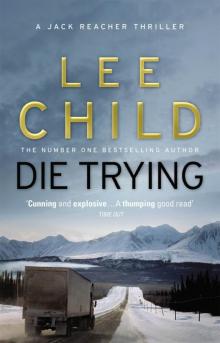 Die Trying
Die Trying Killing Floor
Killing Floor Persuader
Persuader Tripwire
Tripwire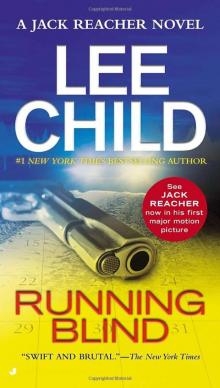 Running Blind
Running Blind Worth Dying For
Worth Dying For One Shot
One Shot Make Me
Make Me The Midnight Line
The Midnight Line Bad Luck and Trouble
Bad Luck and Trouble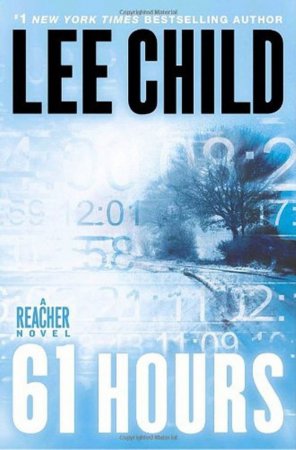 61 Hours
61 Hours Gone Tomorrow
Gone Tomorrow Night School
Night School Personal
Personal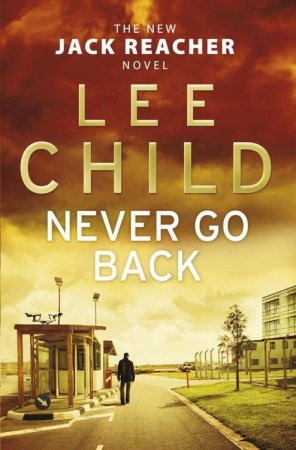 Never Go Back
Never Go Back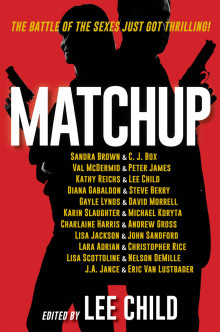 MatchUp
MatchUp A Wanted Man
A Wanted Man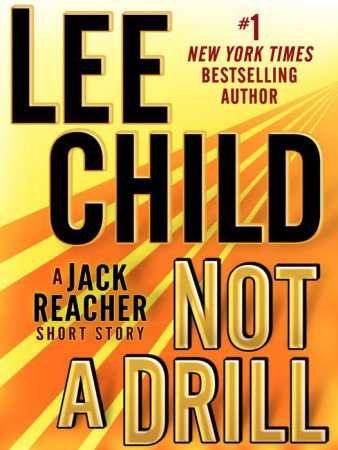 Not a Drill
Not a Drill Echo Burning
Echo Burning Small Wars
Small Wars Deep Down
Deep Down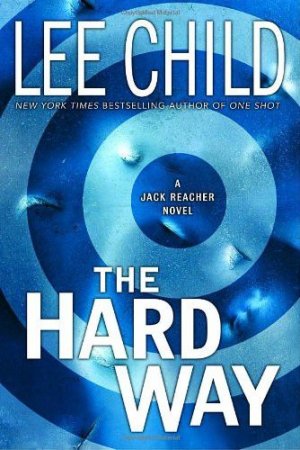 The Hard Way
The Hard Way The Sentinel
The Sentinel The Sentinel (Jack Reacher)
The Sentinel (Jack Reacher) High Heat
High Heat Nothing to Lose
Nothing to Lose The Enemy
The Enemy The Affair
The Affair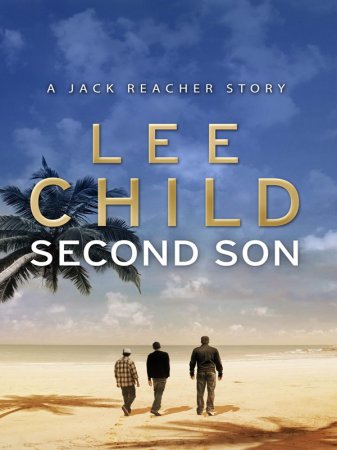 Second Son
Second Son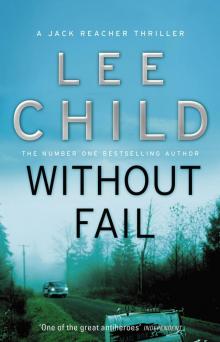 Without Fail
Without Fail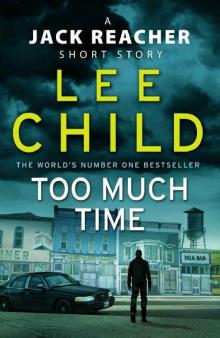 Too Much Time
Too Much Time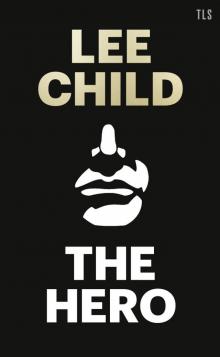 The Hero
The Hero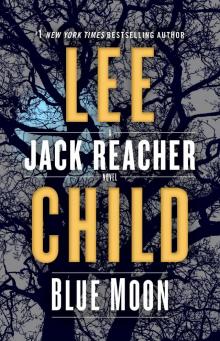 Blue Moon
Blue Moon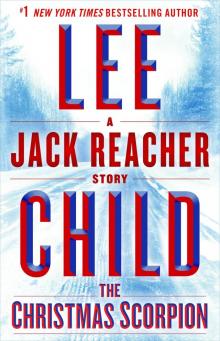 The Christmas Scorpion
The Christmas Scorpion The Nicotine Chronicles
The Nicotine Chronicles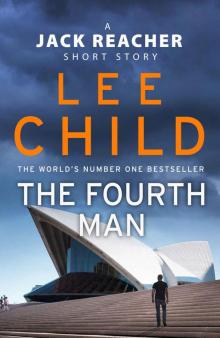 The Fourth Man
The Fourth Man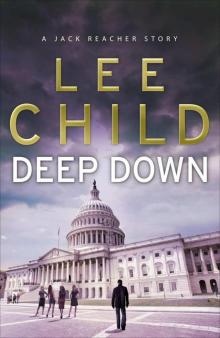 Deep Down_A Jack Reacher short story
Deep Down_A Jack Reacher short story The Essential Jack Reacher 12-Book Bundle
The Essential Jack Reacher 12-Book Bundle Gone Tomorrow jr-13
Gone Tomorrow jr-13 High Heat: A Jack Reacher Novella (jack reacher)
High Heat: A Jack Reacher Novella (jack reacher) High Heat_A Jack Reacher Novella
High Heat_A Jack Reacher Novella Jack Reacher 15 - Worth Dying For
Jack Reacher 15 - Worth Dying For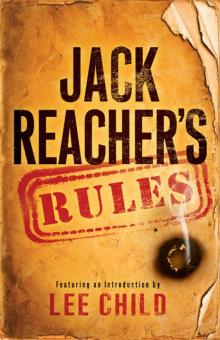 Jack Reacher's Rules
Jack Reacher's Rules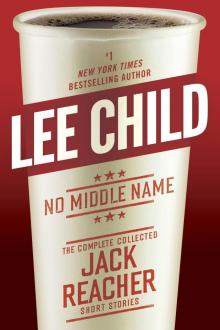 No Middle Name
No Middle Name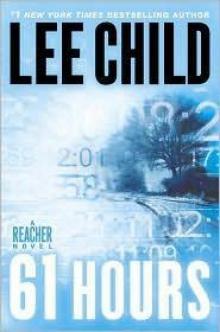 14 61 Hours
14 61 Hours First Thrills, Volume 3
First Thrills, Volume 3 Jack Reacher 01 - Killing Floor
Jack Reacher 01 - Killing Floor The Affair: A Reacher Novel
The Affair: A Reacher Novel FaceOff
FaceOff Good and Valuable Consideration
Good and Valuable Consideration Mystery Writers of America Presents Vengeance
Mystery Writers of America Presents Vengeance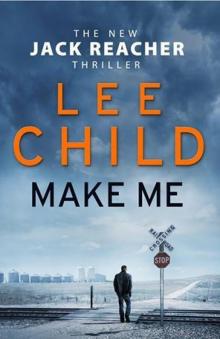 Jack Reacher 20 - Make Me
Jack Reacher 20 - Make Me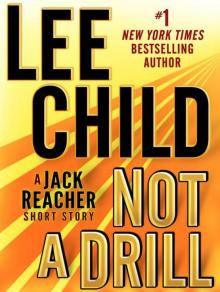 Not a Drill: A Jack Reacher Short Story
Not a Drill: A Jack Reacher Short Story 17 A Wanted Man
17 A Wanted Man James Penney's New Identity/Guy Walks Into a Bar
James Penney's New Identity/Guy Walks Into a Bar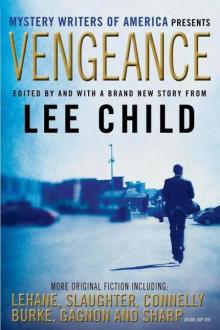 Vengeance: Mystery Writers of America Presents
Vengeance: Mystery Writers of America Presents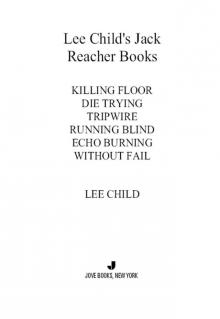 Lee Child's Jack Reacher Books 1-6
Lee Child's Jack Reacher Books 1-6 Killer Year
Killer Year Personal (Jack Reacher 19)
Personal (Jack Reacher 19)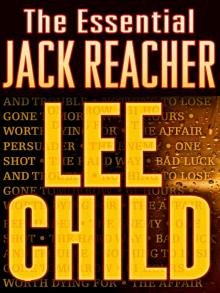 The Essential Jack Reacher 10-Book Bundle
The Essential Jack Reacher 10-Book Bundle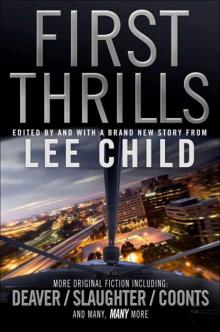 First Thrills
First Thrills Echo Burning jr-5
Echo Burning jr-5 Good and Valuable Consideration_Jack Reacher vs. Nick Heller
Good and Valuable Consideration_Jack Reacher vs. Nick Heller A Wanted Man: (Jack Reacher 17)
A Wanted Man: (Jack Reacher 17) 23 Past Tense
23 Past Tense First Thrills, Volume 4
First Thrills, Volume 4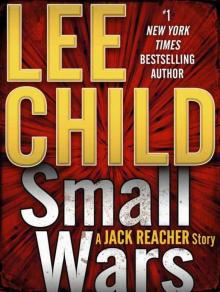 Small Wars_A Jack Reacher Story
Small Wars_A Jack Reacher Story